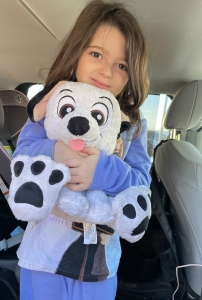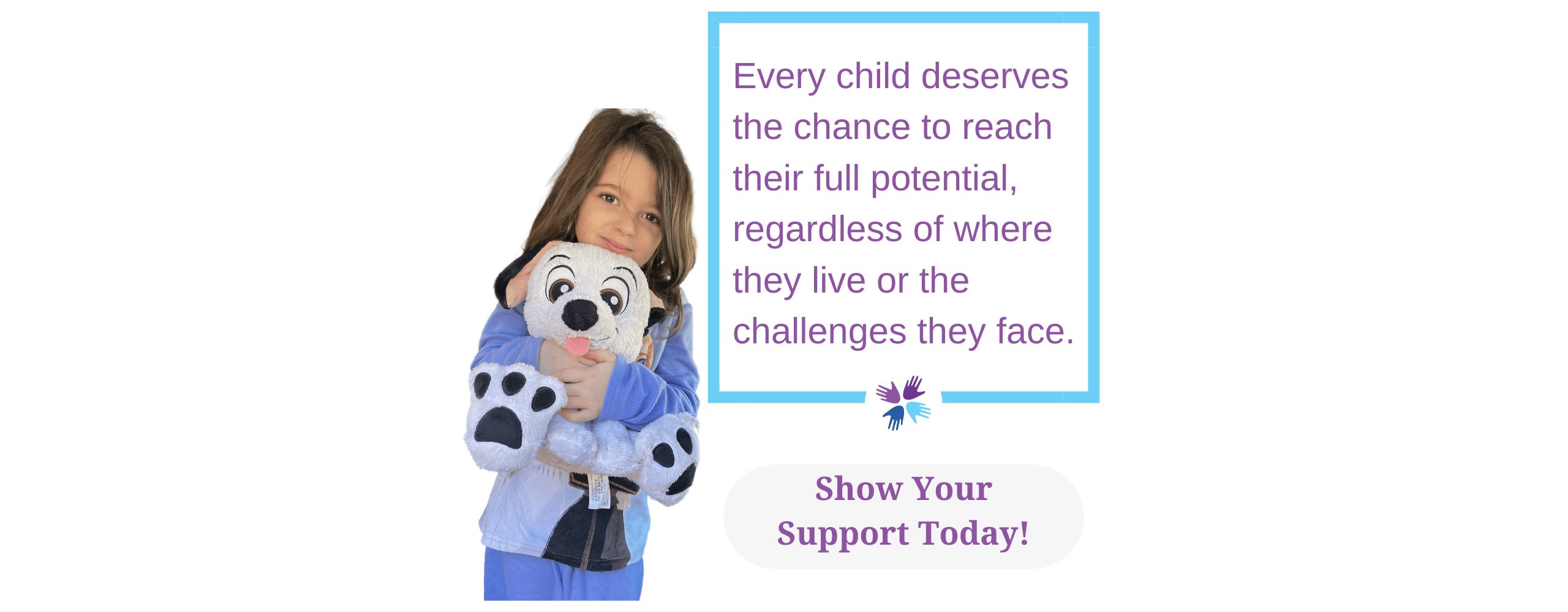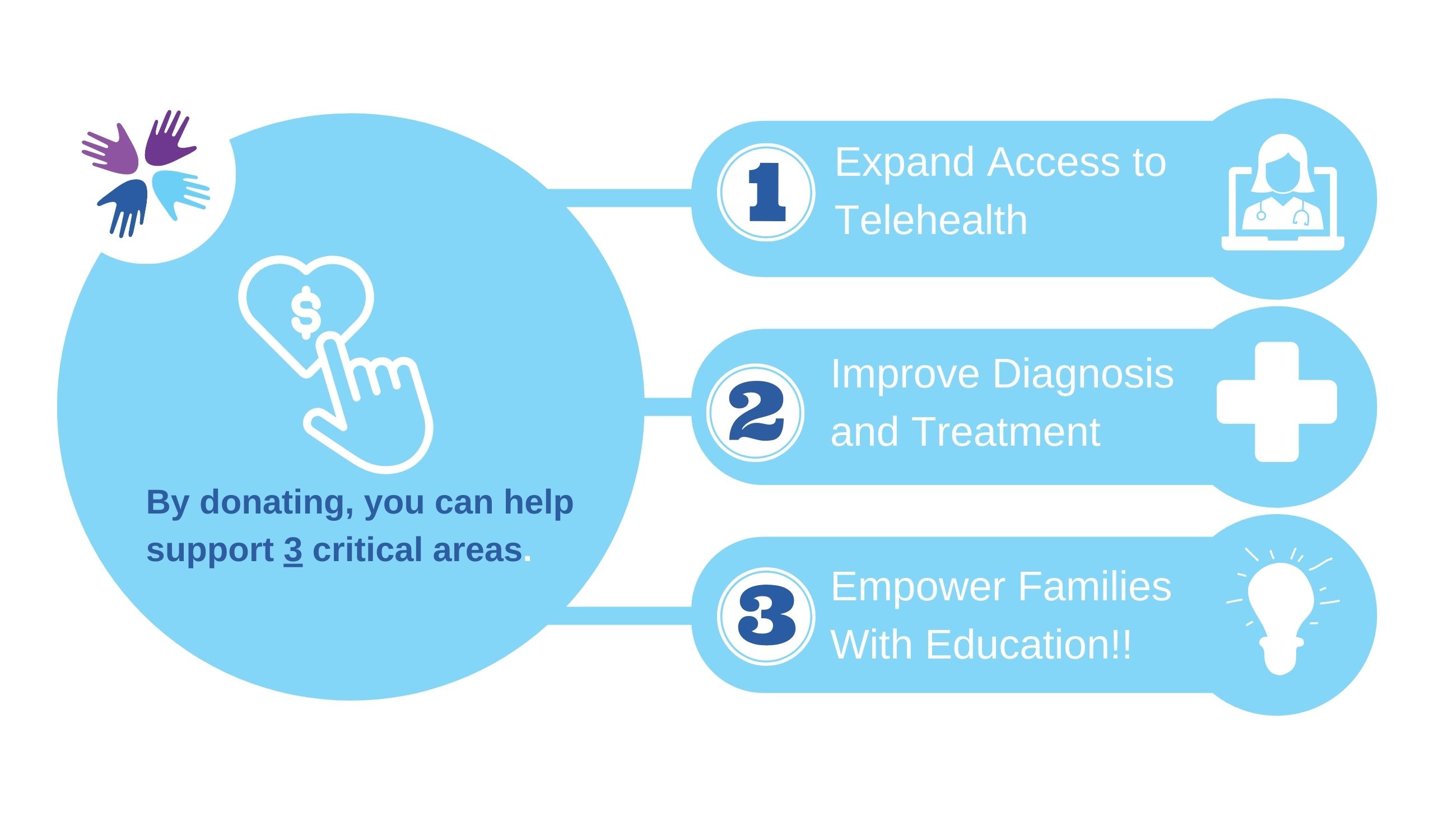The Child Neurology Foundation’s Digital Access Program provides children and families affected by neurological disorders with access to telehealth services and a community of support through online resources.
Meet Mia and Lucky (Mia’s favorite ‘stuffy’!)

The Child Neurology Foundation has a powerful vision: a world where all children with neurologic disorders can achieve their full potential. It’s an ambitious goal, but one that drives everything we do. As an organization, we strive to make a tangible impact in the lives of children and families affected by neurological conditions.
But how do we measure our impact? It’s a question that we take seriously. We want to ensure that our efforts are making a meaningful difference in the lives of those we serve. To do this, we recently followed up with Alyssa Kimball, who joined the Digital Access Program in 2022.
Alyssa Kimball faced significant difficulties in finding the right care and resources for her daughter Mia’s neurologic disorder. The challenge was compounded by their rural location, which made it both expensive and time-consuming to access medical care. The Kimballs would have to drive for three hours each way for doctor’s appointments, making it extremely challenging to find the right care for Mia. That’s where the Child Neurology Foundation came in through the Digital Access Program.
Through the program, Mia was able to access telehealth services and connect with other families facing similar challenges.
“The Digital Access Program has been life-changing for us,” Alyssa said. “It’s given us access to care that we wouldn’t have been able to access otherwise, and it’s given us a community of support that we desperately needed.”
“It was through the Facebook support groups that I learned about non-epileptic seizures, which Mia was having along with epileptic seizures,” Alyssa explained. “It was hard at first to distinguish between the two because the non-epileptic seizures were caused by the heart stopping and losing oxygen to the brain. They look different, but it was hard to catch them on an EEG. That’s when I turned to YouTube videos.”
Alyssa found that other parents had documented their child’s journey through non-epileptic seizures and shared videos online. By watching these videos, Alyssa was able to identify similarities between Mia’s seizures and those she saw online. “Mia was not thriving, and no one believed us because we couldn’t catch it,” Alyssa recalled. “We were told to record it, but that wasn’t the easiest thing to do. So I turned to online resources to find answers.”
After watching the videos and doing some research, Alyssa contacted a cardiologist and asked for a Holter monitor, which monitors the heart’s activity over time. This led to a breakthrough in Mia’s diagnosis and treatment. “I had to find this outside information and bring it in,” Alyssa said. “It was through my own research that we were able to finally get to the bottom of what was going on with Mia.”
For the Child Neurology Foundation, the Digital Access Program is just one part of its larger vision for a world in which all children affected by neurologic disorders reach their full potential. Through initiatives like the Digital Access Program and its ongoing research and advocacy efforts, the foundation is working to improve access to care and support for children and families affected by neurologic disorders.
The Digital Access Program has been a lifeline for families like the Kimballs, providing critical resources and support for children with neurological conditions. However, there are many more families out there who need access to these same resources and services. With your support, the Child Neurology Foundation can continue to expand the Digital Access Program and ensure that even more families can receive the care and support they need to help their children thrive.
Your donation can help us make a real difference in the lives of these families, so please consider supporting the Child Neurology Foundation today!
It’s easy to give on-line, just click here to Donate today!


